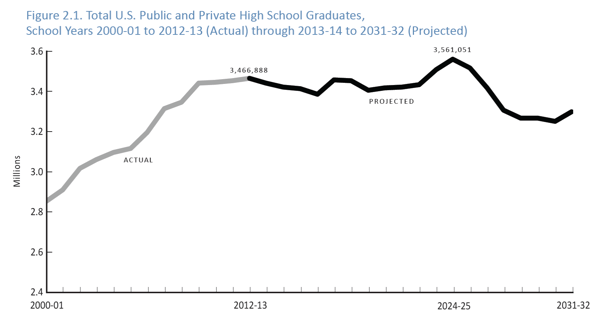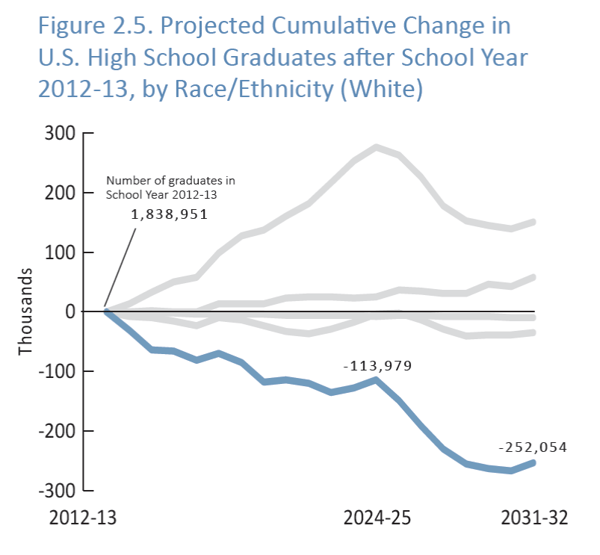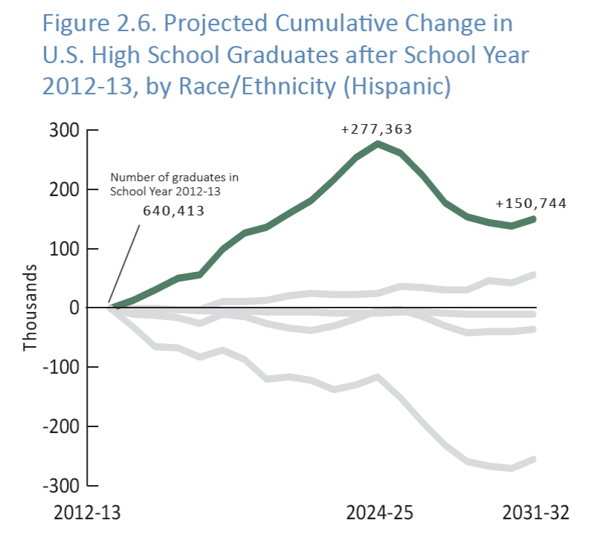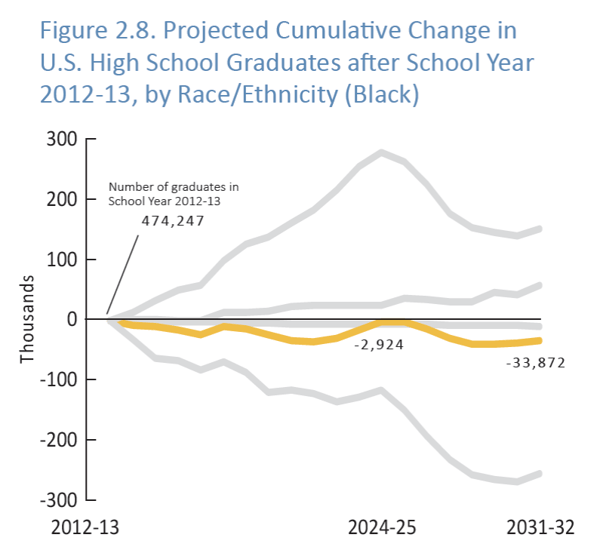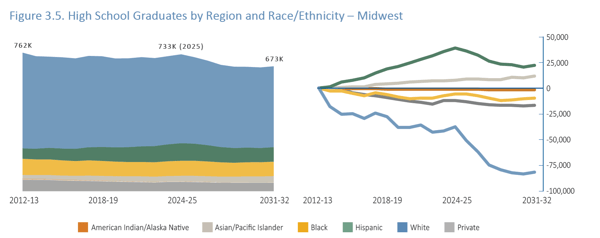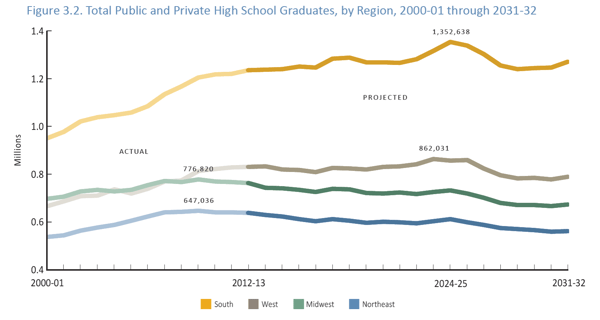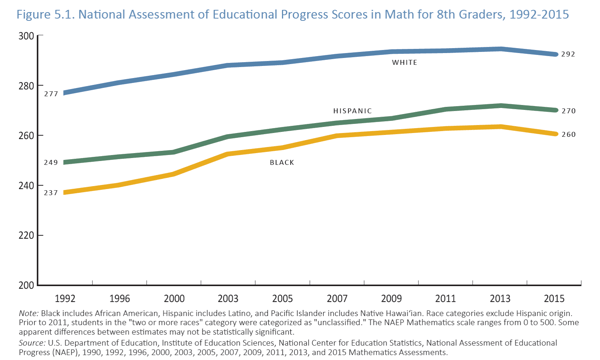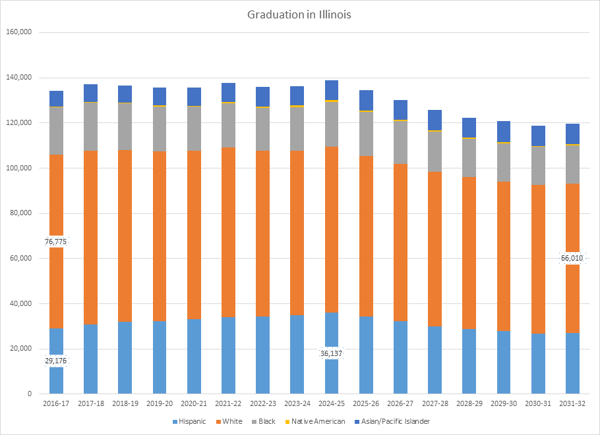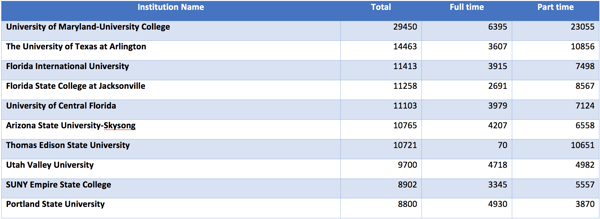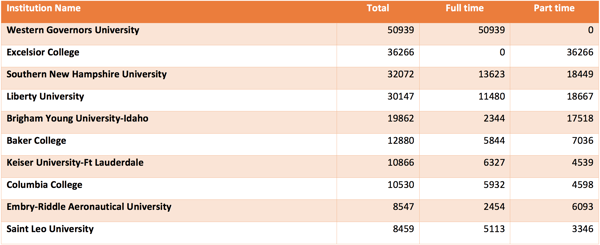Published on
Knocking at the College Door: Understanding and Adapting to Demographic Shifts

The market for traditional-age students is a zero-sum game (enrollment is likely to go down, especially in the Midwest). To maintain and increase revenue, institutions of higher education must strengthen their focus on recruiting and supporting the adult student market.
Changing demographics
The Western Interstate Commission on Higher Education (WICHE) has released its sixth version of a report that tracks the number of high school graduates in the U.S.
WICHE’s report, Knocking at the College Door, provides a useful picture for what college entry will look like over the next 20 years.
Nationally, we can expect a period of flat or declining college enrollment from high school graduates until 2023-2025 and then a period of decline.
Growing Diversity
However, the picture is slightly more complex than it first appears. The share of this enrollment that is white and black is declining, while the share that is Hispanic is increasing dramatically.
We in Illinois share the trends illustrated below with our neighbors in the Midwest:
This boom in Hispanic graduation is good news but brings with it several implications. Virtually all the growth in high school graduation is in Texas. There are now more Hispanic graduates of high schools in Texas than there are total graduates in Illinois.
Institutions need to be alert to these shifting demographics and to be prepared for the new challenges and opportunities that they bring. We will face a rising number of not-as-well-prepared students in future classes.
Implications for Illinois
The tale for Illinois is one of declining numbers and growing diversity. The graduating classes for Illinois will get smaller over the next several years. They will peak at 137,049 next year and decline steadily thereafter, to 119,775 in 2031.
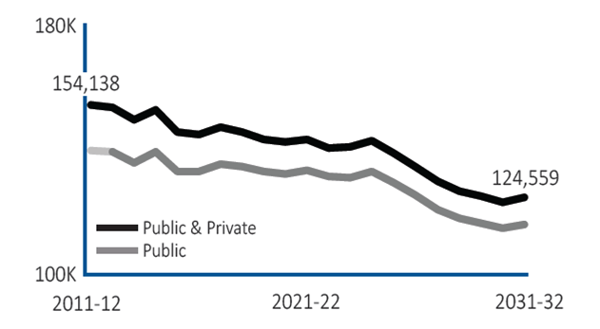
Our graduating classes in Illinois will grow considerably more diverse, as the number of white graduates will decline from the current level of 76,775 to 66,010 by 2031. The number of Hispanic graduates will grow to a peak of 36,137 by 2024.
What does all this mean?
Recruiting a class of traditional freshmen will grow more challenging. In Illinois, the classes will grow more diverse. A larger share of students will arrive with greater academic needs. This daunting demographic picture will need to be dealt with by colleges and universities by becoming more open and supportive of students with a greater variety of needs. Those that are unable to make these shifts will likely see their enrollment decrease.
So, the choice is clear: Accept this daunting environment in which the incoming freshmen classes get smaller, or change recruiting targets.
Recruiting more traditional students outside the region (e.g, Texas or international sources) has been covered extensively in other publications. Here our emphasis is on the necessity of recruiting and supporting adult students.
Shifting enrollment patterns
As the economy has improved, enrollments by adult students have been shifting.
In a recent report from the National Student ClearingHouse Research Center, the enrollment in spring 2016 had increased among those age 24 and up only for those enrolling in four-year non-profits, where enrollment increased by 1.5 percent.
The enrollment among adult students has generally been shifting downward, with the overall enrollment dropping by 3.4 percent. The downward trend is sharpest in the for-profit sector, which has seen its enrollments fall 7.7 percent. Two-year community colleges are also seeing a dip of 5.8 percent across their sector.
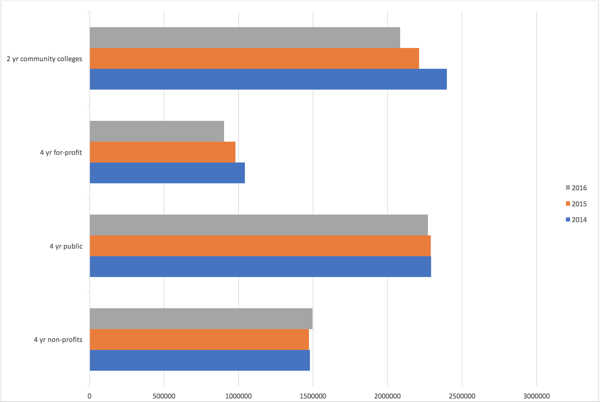
The decline in community college enrollments for adult students is perhaps due to the improved job market as more adult students make the choice to work as opposed to going back to school. The decline in the for-profit sector is a response to the continuing problems experienced in this sector. The stable or growing enrollments in the not-for-profit sector and the public sector are worth exploring.
Publics
These are the top 10 among public sector, primarily “bachelor level and above” institutions and their enrollment from undergraduates who are age 25 and up by fall 2015 enrollment.
Not-for-profits
Similarly, these are the top 10 among non-profits which are primarily “bachelors and above” with their enrollments from undergraduate students age 25 and up.
What is common among these top adult-focused institutions?
In their programs aimed at working adults, these institutions focus on occupational programs. They all have robust online programs. Their tuition is relatively low, typically hovering at the $400 mark. Regional campuses are part of their strategy, if they are not fully online. They all have good programs for veterans. Most have accelerated programs. Most feature prior learning assessment. Partnerships with local or national employers are a feature of most.
How do their strategies vary?
Some of these feature a focus on competency-based programs. This is most prominent at Western Governors and Southern New Hampshire. Some are focused on meeting the needs of adult learners: Western Governors, Excelsior, SUNY Empire State, University of Maryland University College, and the unit of Arizona State. Certain publics serve a mixed audience with traditional students still prominent in their marketing: UTA, the Florida publics, Utah Valley, Portland State. For the non-profits, online options and on-campus regional options are generally presented equally with traditional paths (Southern New Hampshire, Liberty, Brigham Young, Keiser, Columbia, Embry-Riddle, and Saint Leo). Religion features prominently in two of the non-profits (Liberty and Brigham Young – Idaho) while Columbia and Saint Leo feature their religious affiliations less prominently.
What is needed?
To meet the needs of adult learners, institutions will need to continue the push to provide robust online programs, keep tuition down, serve veterans well, become more entrepreneurial, join with employers to develop new programs for future jobs, create flexibility in programming for the adult learner, streamline admission processes, integrate PLA, and provide creative solutions for support services for adults.
Author Perspective: Administrator

